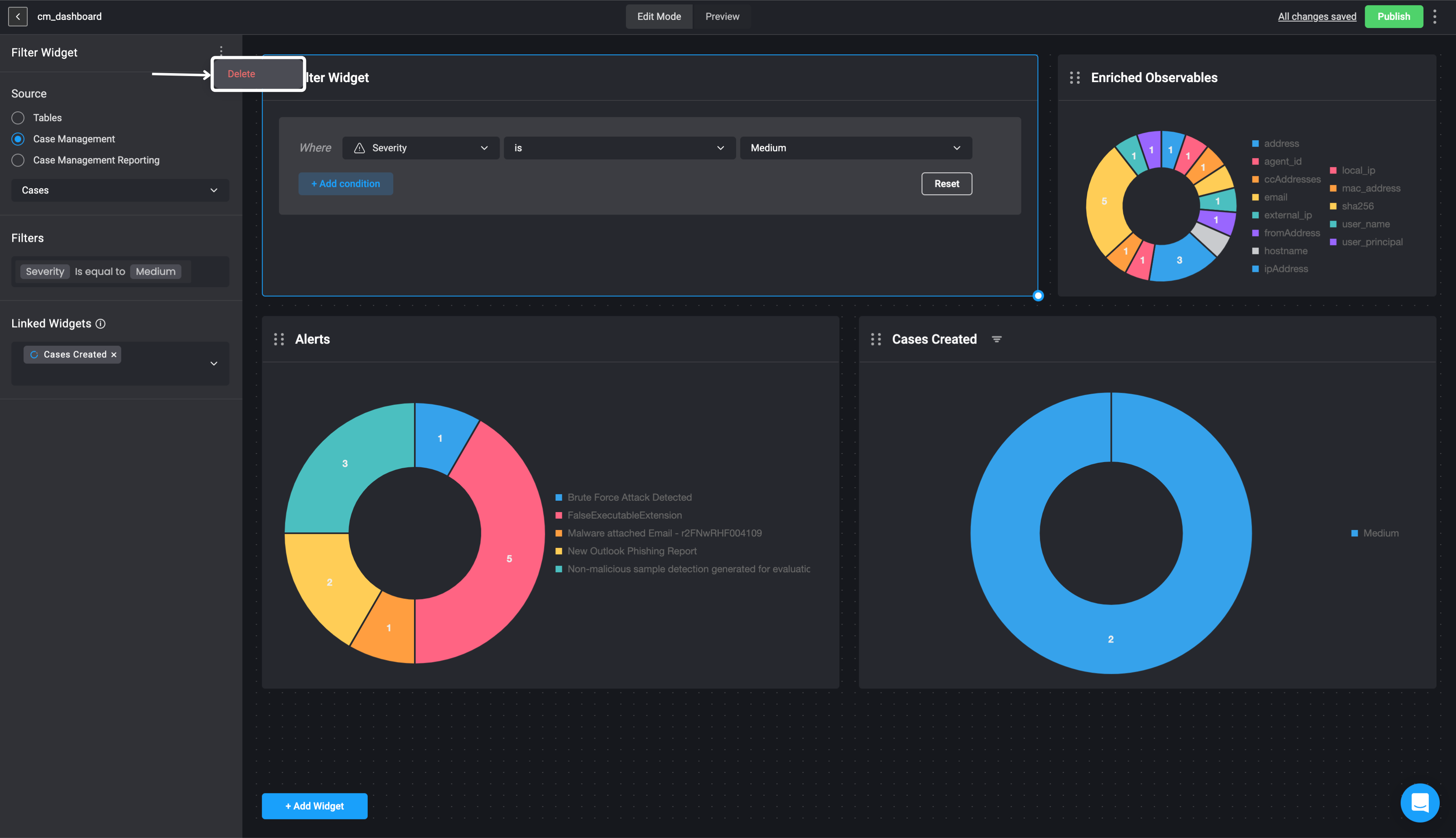Important to Note:
Before using the Filter Widget, keep these points in mind:Note
- The filter widget can only be linked to other widgets that have the same data source.
- The filter widget can only be applied to a single widget where filtering has already been applied.
Adding a Filter Widget
1
Add a Filter Widget
In the Edit Mode tab of the Dashboards Building Interface, click the “add a widget” button. Choose the Filter option from the widget list.

2
Name the Widget
In sidebar in the top left corner , double click on Untitled widget and provide a name for the selected widget.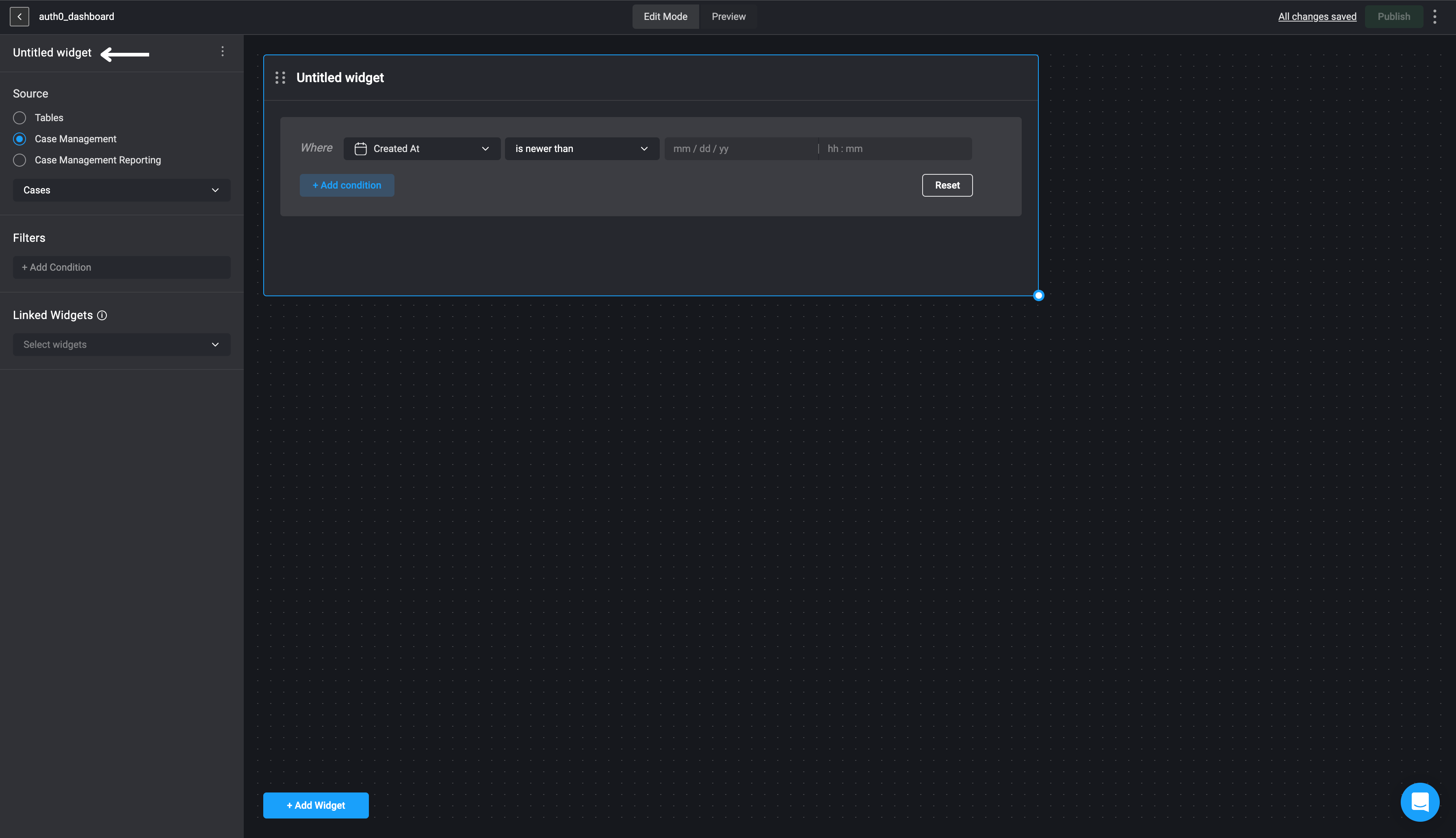

3
Select a Data Source and Column
Choose a data source: Tables, Case Management Tables or Case Management Reportings and proceed by selecting the specific table column from the data source you would like to use.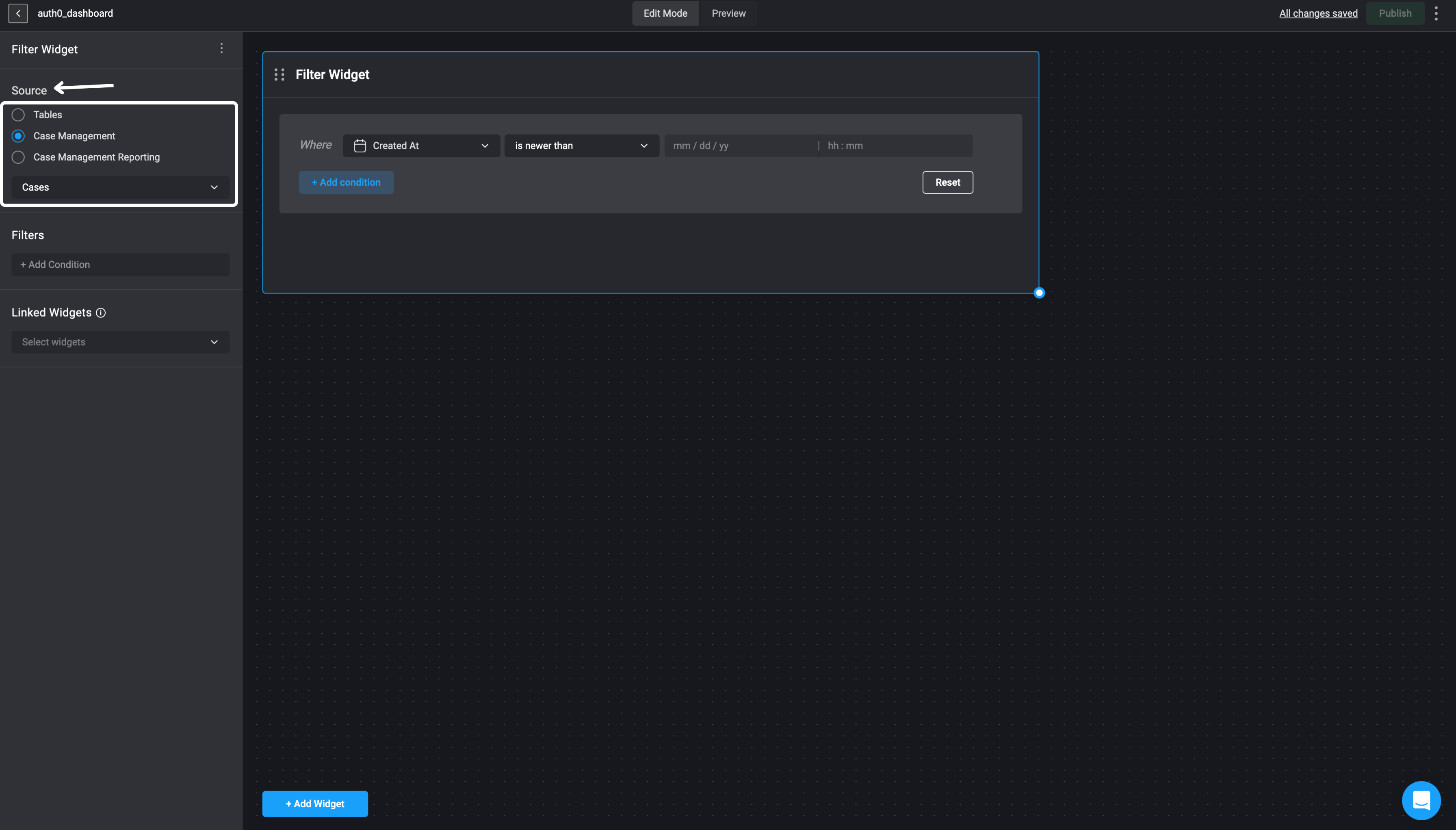

4
Define Filter Conditions
Under the Filters section, click on “add condition(s)” to add conditional statements by using the condition builder.

5
Connect Filter to Target Widget
Lastly, connect your Filter Widget to the widget you want to filter. In the following example, the filter widget is connected to a bar graph displaying case data. The filter is set to show only cases with a “medium” severity level, demonstrating how the widget updates to reflect the applied filter.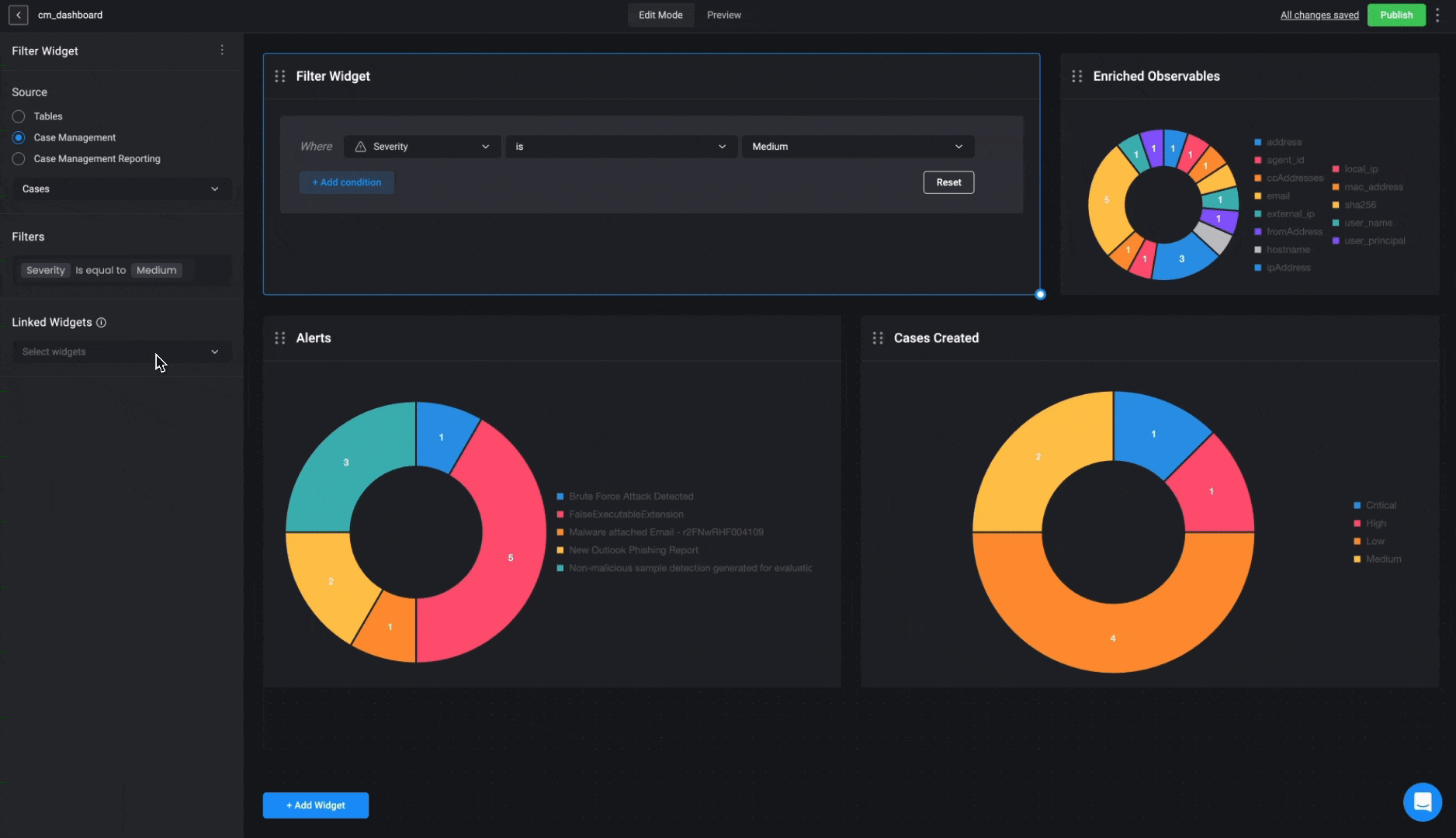

Editing the Filter Widget
1
Making Changes to the Filter Widget
If you want to remove a conditional statement and stop the filter from being applied to the linked widget, click the Reset button. For any other changes, you can edit directly in the left-hand sidebar. Simply locate the relevant section to adjust or update the information as needed. Changes will be applied automatically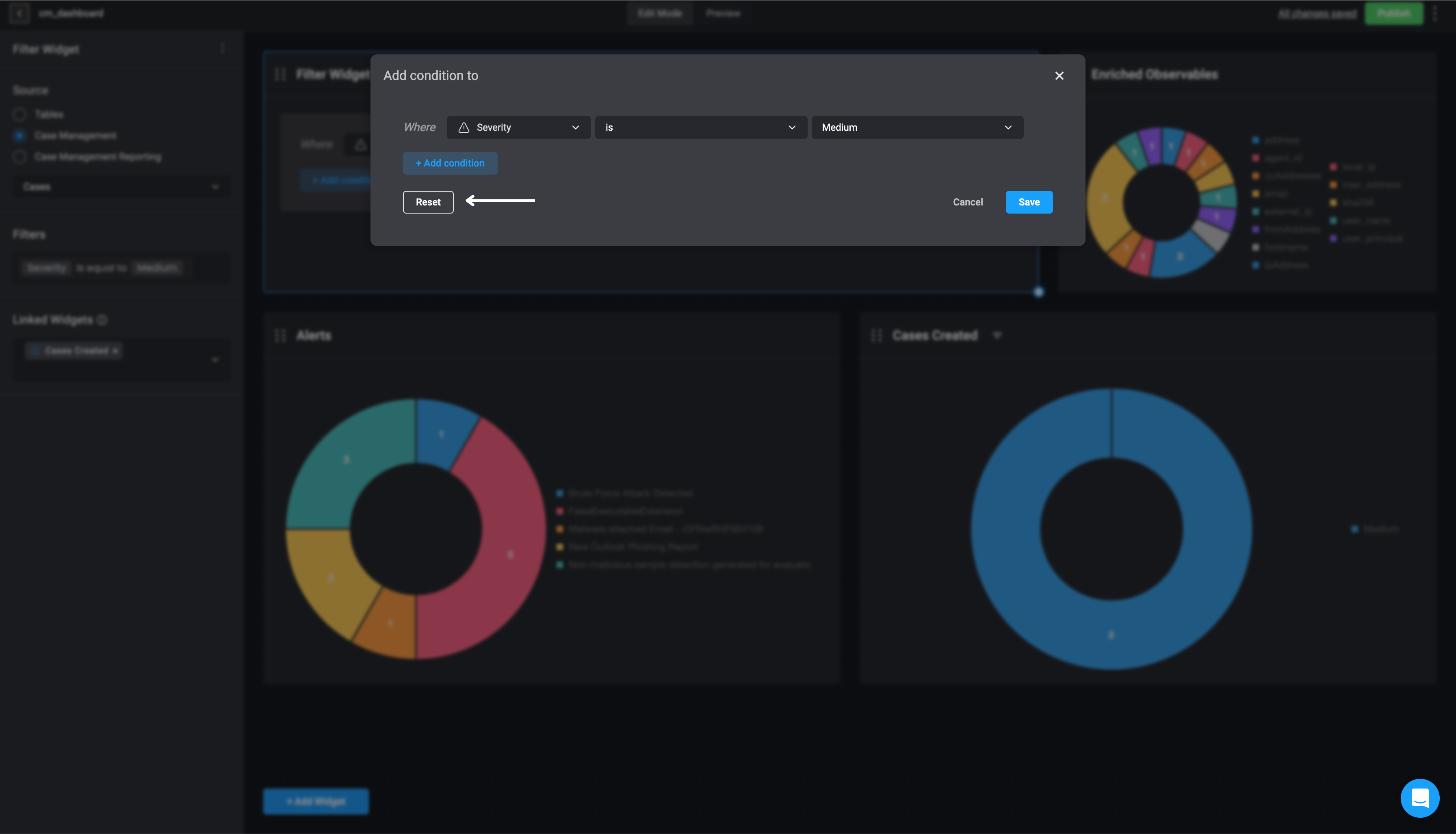

Deleting a Filter Widget
1
Open Widget Options
In the left-hand sidebar, click the icon in the top-right corner and then select the delete button.
2
Confirm Widget Removal
The Filter widget will be removed from your Dashboard Building Interface.